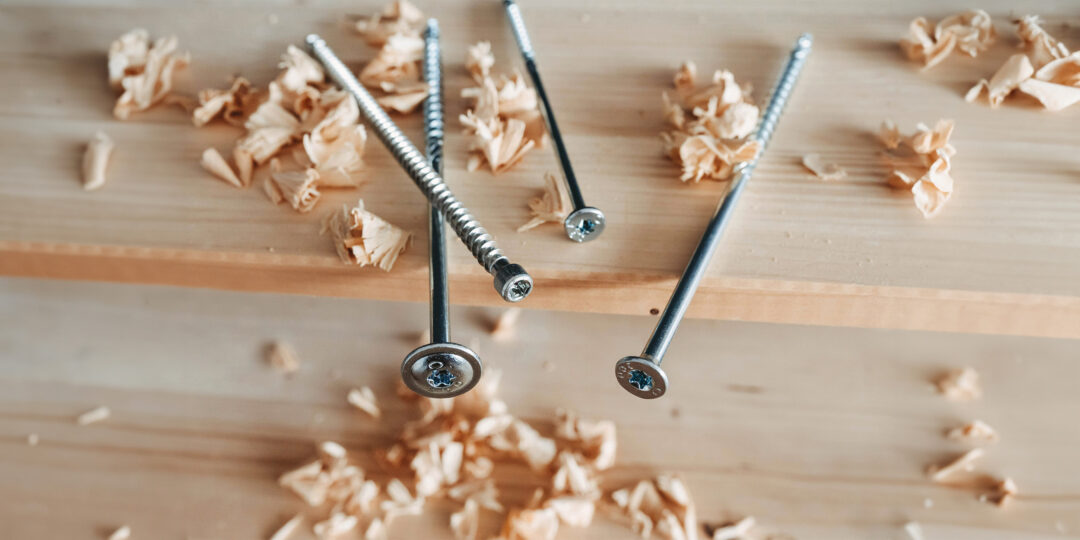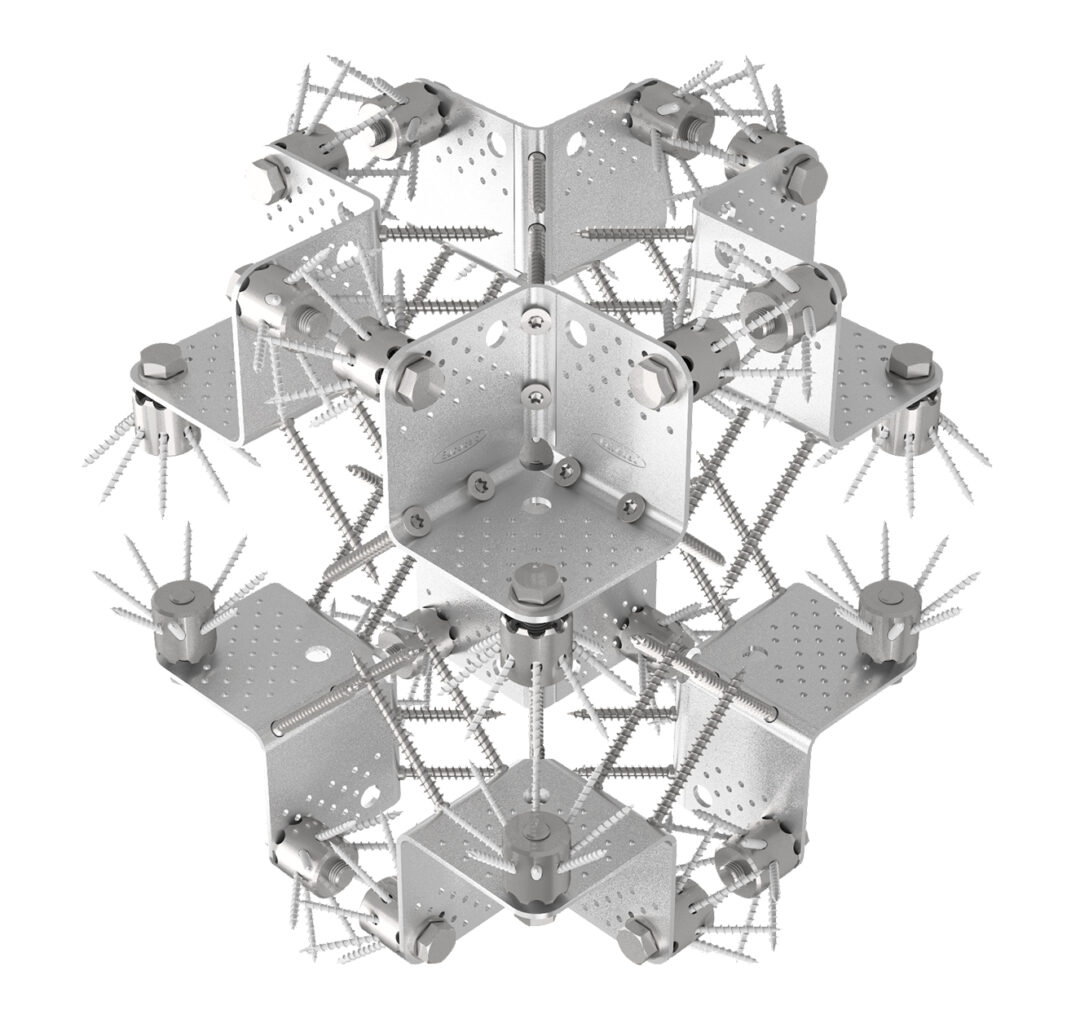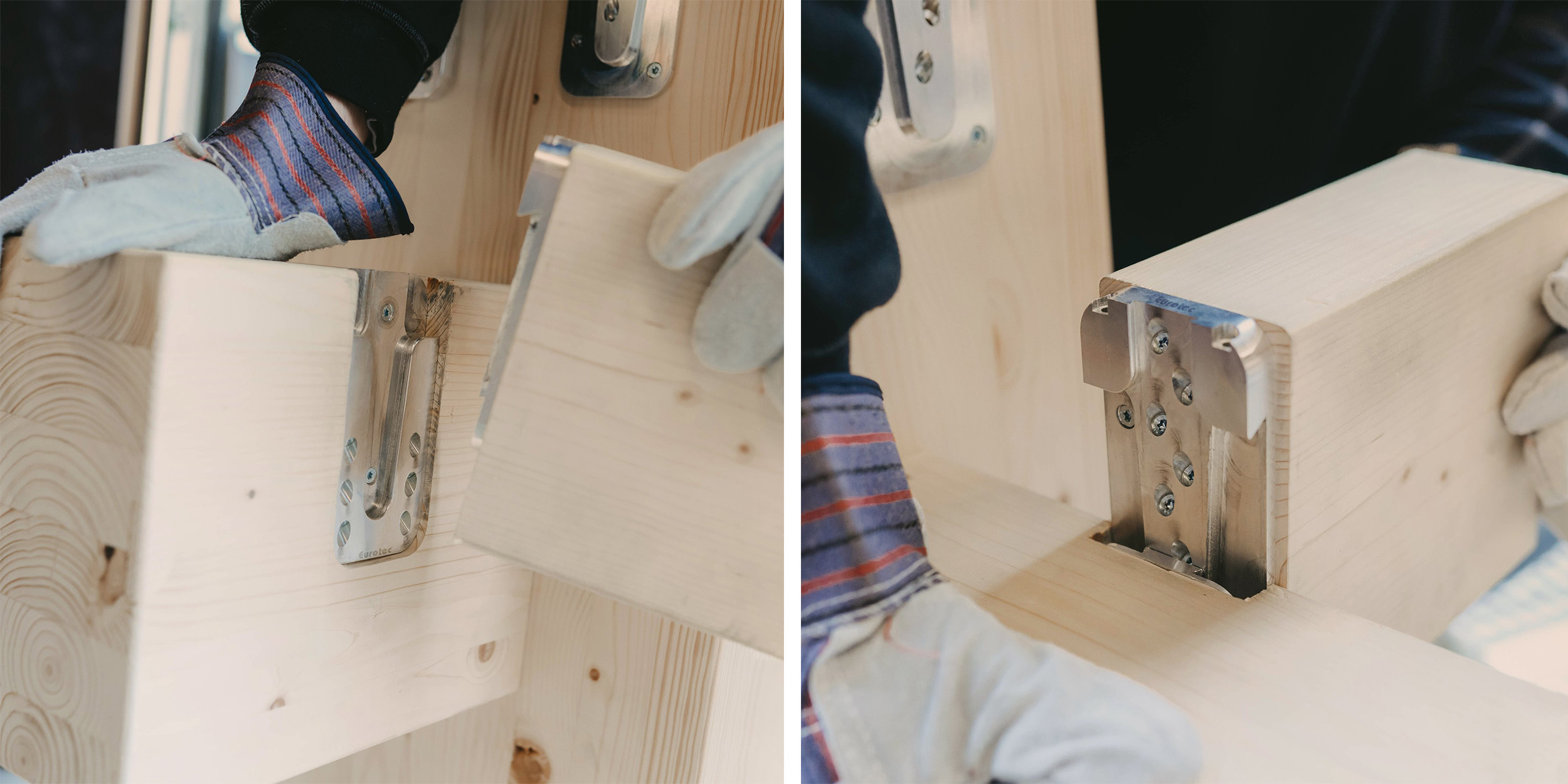Marshall Innovations has been around for 25 years. And while they were one of the pioneers in weather-control products for the New Zealand market, the trend towards mass timber construction has seen rapid growth in new areas of the business.
Marshall represents the giant German firm, Eurotech, one of the largest manufacturers of screws, fixings, and brackets in the market. Their warehouse is now bristling with specialized brackets for absorbing shearing forces and hardened carbon fixings for pulling together huge timber structures.
“We’ve been working in that space for the last three years and it’s been such a steep learning curve: building with it, the restrictions around it, and in our particular case, the fixings and brackets that make up a large portion of the cost of these particular projects,” says Marshall Innovations Sales Manager Israel Ellis.
The Marshall team has increasingly found itself at the centre of some exciting timber projects around the country.

Ellis says the fixings used for mass timber are not everyday off-the-shelf products you’d see at your local hardware store. They’re highly specialized items that can make a mass timber compliant, or not.
“We’ve got screws—they’re referred to around the world as connectors—that are 13 mil by 1.4 meters in length, for example, big connectors that offer structural strength to your build.
“On the surface, a screw is a screw, but they can be designed in many different ways with different tips, different heads, different core thicknesses, and different threads. You’ve got ductility details on the screws, your shear strengths, tensile strengths, pull-through rates, and all of these are based on different types of timber. There’s a lot more to it than what you see on the surface,” he says.
“New Zealand has some leading mass timber engineers that help determine the correct connector for the project.”
Ellis says that getting the right range has been the key challenge. And given the wide range of products and the uncertainty of what engineers might specify for a project, it isn’t feasible to keep the entire range on the shelf in adequate volumes at all times.
Therefore, Ellis says they must ensure these products are imported as efficiently as possible in coordination with timber manufacturers and engineers.
There’s more to it than just picking a connector from the catalogue. Ellis says that the construction format and components can impact the cost of the project. So, they engage constantly with the engineers who work for Eurotech, based out of Istanbul, Germany, and Chile—using their experience to ensure construction techniques are optimal for each project.

“New Zealand has a different timber density, and we also have different seismic requirements compared to other countries. So making sure that we’ve tested all of our brackets and screws to the New Zealand expectations is important,” Ellis says.
“We’re currently working with Auckland University and a university in Turkey as well, conducting testing around seismic performance in order to give us the correct data that we need. I believe that it’s a fantastic space to be in because everyone’s working together.”
The right advice can save a lot on a job.
“To give you an example, we had a mass timber job where particular beams had to be a certain width, and that width was based on the required fixings for the strength. But, by using a different fixing, they were able to reduce the size of those beams, and that lowered the cost of the project and helped them bring the build back into profitability,” he says.
Ellis says the mass timber construction sector is expanding, and as more people are getting involved, it’s actually reducing in cost as well.
“There are more people building particular mass timber sites, bringing in machinery to be able to produce mass timber, whether it be CLT or glulam. And we’re moving towards more standardization.
“If we can get some standardization, then we can provide the market with the suitable connectors and brackets and this is ultimately going to reduce the cost of build! So I believe we are heading in a positive direction,” he says.

